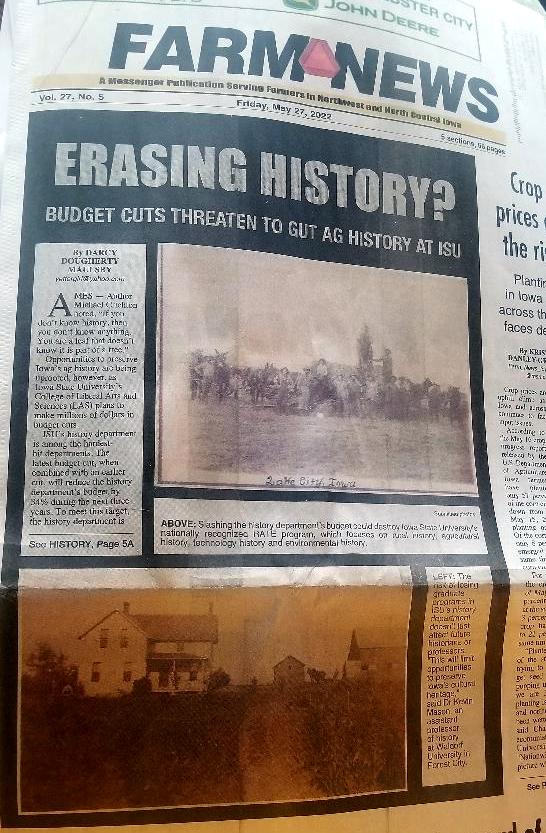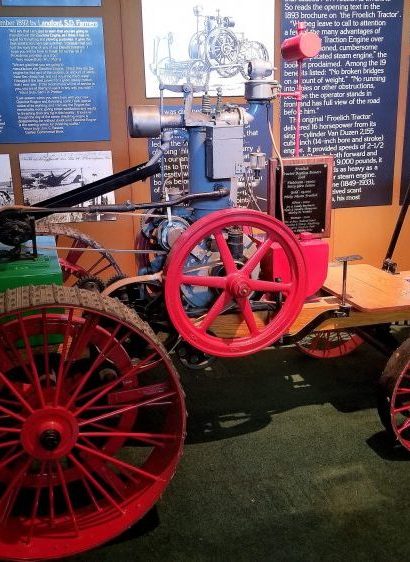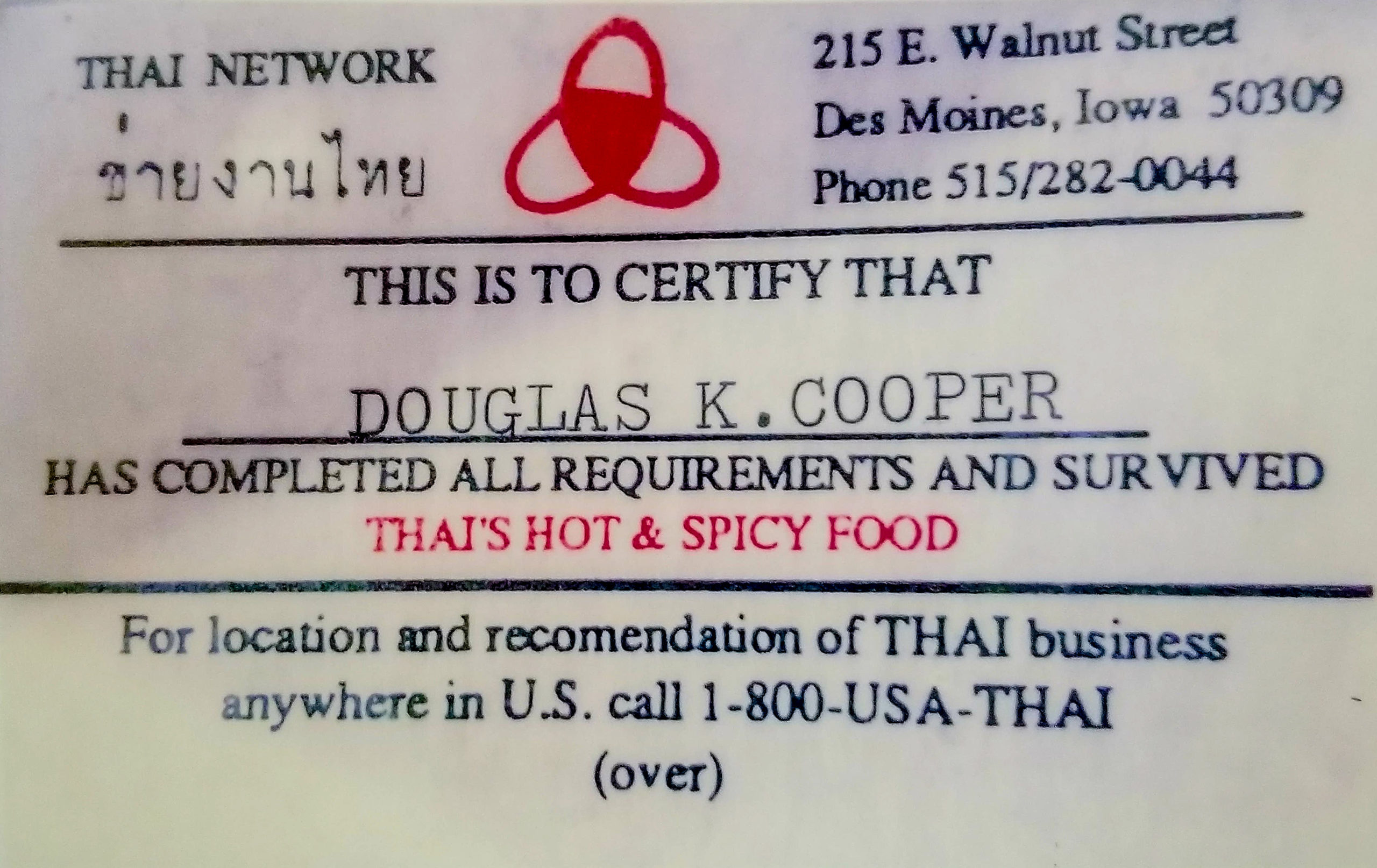
Whats HOT
Latest Posts

Behind the Scene at Iowa’s Own Market to Market
If you’ve lived in Iowa, especially on a farm, anytime from the mid-1970s to today, there’s a good chance your family has tuned into Iowa Public Television (IPT) on Friday nights (or possibly Sunday afternoons) to watch Market to Market. That’s how it has been at my family’s Century Farm, and it’s a tradition that makes me proud to be an Iowan.
After all, Iowa is the home of Market to Market, which has covered issues affecting agriculture, from global trade conflicts to environmental controversies to changing technology, for more than four decades. Today, the weekly news segments and market commentary are geared towards the nearly 60 million people who live and work in rural America.
 Even when I was too young to really know what Market to Market was all about, I could always identify the show by its music. I didn’t know the ending theme song was “Buy for Me the Rain” by the Nitty Gritty Dirt Band. I just called it the Market to Market song, and I’m glad it’s still part of the show.
Even when I was too young to really know what Market to Market was all about, I could always identify the show by its music. I didn’t know the ending theme song was “Buy for Me the Rain” by the Nitty Gritty Dirt Band. I just called it the Market to Market song, and I’m glad it’s still part of the show.
History and tradition are part of Market to Market, the longest-running TV show of its kind. The first episode of Market to Market debuted on October 24, 1975, on IPT. Back then, the show was called “Farm Digest,” I learned from Dave Miller, a senior producer/director who has worked at IPT more than 33 years.
I met Miller in July when my family and I toured the IPT studio in Johnston. The tour came about after Josh Buettner, an IPT producer/director, visited our farm a few years ago to shoot a segment on water quality. He mentioned that if I’d ever like to watch a taping of Market to Market, he could arrange it.
I thought it would be cool to take him up on this unique opportunity, since my family has been Market to Market fans for decades. When we pulled up outside the gleaming white studio on a hot Friday afternoon in July, we felt like royalty as IPT staff members greeted us at the front door and welcomed us into the bright lobby. When we were ushered back to the control room around 4 p.m., I was amazed by how dark the rest of the building is.
As we took our seats around the edge of the room, it wasn’t long before a staff member called out “We’re 15 seconds away. Stand by everybody, stand by!”
At the word “go,” vibrant images flashed onto row after row of computer monitors that glowed against the black surroundings. “Thunder!” called out one producer as the famous Market to Market logo shot onto the screens.
About 10 minutes later, we were ushered across the hall into the cavernous main studio, where Market to Market host Mike Pearson sat at a spacious desk and prepared to interview analyst Tomm Pfitzenmaier. As the red digital numbers counted down on a monitor near us, it seemed surreal to watch the interview in progress, both in person just a few feet from us and on a TV monitor right in front of us.
 As I took it all in, from the thick power cords snaking across the floor to the huge cameras to lights of all types hanging from the black ceilings, I wondered what the technology was like back when Chet Randolph hosted the show. Dave Miller filled in some of the gaps. “I can remember when we had to run the tapes to the bus station in Des Moines so they could be put on an express bus to Lincoln, Nebraska, which had the nearest uplink,” he noted.
As I took it all in, from the thick power cords snaking across the floor to the huge cameras to lights of all types hanging from the black ceilings, I wondered what the technology was like back when Chet Randolph hosted the show. Dave Miller filled in some of the gaps. “I can remember when we had to run the tapes to the bus station in Des Moines so they could be put on an express bus to Lincoln, Nebraska, which had the nearest uplink,” he noted.
Wow, times have definitely changed. Still, one thing hasn’t changed—the Market to Market team’s commitment to share timely news and ag-related feature stories each week. When the show wrapped up and I heard the familiar notes of “Buy for Me the Rain,” it was amazing to think that the segments recorded right in front of our eyes would be broadcast to 20 states from California to Tennessee in just a few hours—and it all starts right here in Iowa.
This piece originally appeared on Farm News.
Want more?
Thanks for stopping by. I invite you to read more of my blog posts if you want more more intriguing Iowa stories and history, along with Iowa food, recipes and tips to make you a better communicator. If you like what you see and want to be notified when I post new stories, be sure to click on the “subscribe to blog updates/newsletter” button at the top of this page. Feel free to share this information with friends and colleagues who might be interested, too.
If you’re hungry for more stories of Iowa history, check out my top-selling “Culinary History of Iowa: Sweet Corn, Pork Tenderloins, Maid-Rites and More” book from The History Press, as well as my Calhoun County” book from Arcadia Publishing, which showcases the history of small-town and rural Iowa. Order your signed copies today! Iowa postcards are available in my online store, too.
Let’s stay in touch. I’m at darcy@darcymaulsby.com, and yettergirl@yahoo.com.
P.S. Thanks for joining me. I’m glad you’re here.
@Copyright 2017 Darcy Maulsby & Co.
About me:
Some people know me as Darcy Dougherty Maulsby, while others call me Yettergirl. I grew up on a Century Farm between Lake City and Yetter and am proud to call Calhoun County, Iowa, home. I’m an author, writer, marketer, business owner and entrepreneur who specializes in agriculture. Learn more at www.darcymaulsby.com.
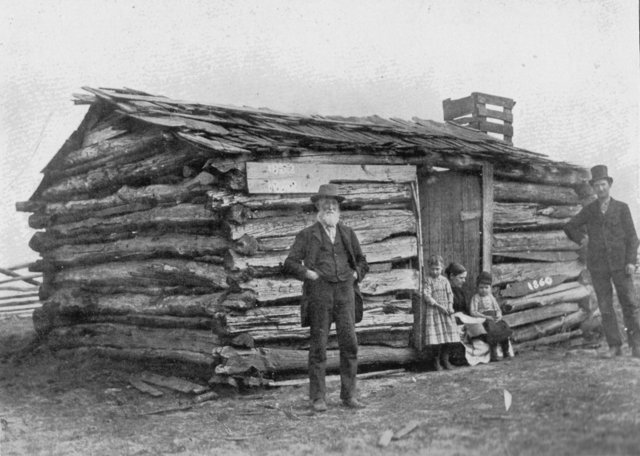
5 Ways a “History Head” Mindset Helps You Think Big
Want a secret weapon to gain more respect, get along better with others, excel at leadership, grow your business and just have more fun in life? Brush up on history.
Take it from this “history head.” A knowledge of history gives you deeper insights into yourself and others. When you become a “history head,” you gain an incalculable advantage over those who don’t have this mindset.
Here are 5 ways that becoming a “history head” will pay off and help you think big:
1. Discover the cure for the dreaded “presentism.” If you can only see the short term, you think only of the here and now. Losing all sense of perspective makes you prone to “presentism,” a sense of exaggerating present challenges out of proportion to all those challenges that have existed before.
2. Increase your odds of success. A knowledge of history is like a virtual time machine that lets you see the big picture. It’s easier to measure your current plans against things that have already occurred and weigh them against your aspirations for the future. While the nearsighted person sees only the present, and the dreamer sees only an imaginary future, often tripping over his or her mistakes trying to get there, a “history head” has a much stronger sense of reality and better chances of success.
3. Enjoy more career opportunities. History requires a complex skill set. It demands thorough research, critical thinking, and problem-solving skills. You must study and interpret a variety of sources, including politics, law, economics, sociology, psychology, the sciences and the arts, to extract meaning. These are exactly the high-level skill sets that are required in today’s top jobs.
4. Become a thought leader. Like many modern challenges in our world, history can be extraordinarily complex. In an era marred by fake news, history endows you with a healthy skepticism and a capacity to question the world around you. As you delve deeper, you almost always find unanswered questions, unclear information or missing pieces of evidence. At some point, though, you must stop researching and start developing a credible course of action. It’s like assembling a jigsaw puzzle, except there’s no picture to serve as a guide, and some of the pieces are missing. The historian, like any thought leader, must weigh the evidence, think clearly, and become a strong communicator who can express a compelling, accurate point of view.
5. Make life better. At its core, history helps you learn what it means to be human. You explore timeless issues and challenges that have impacted generations of people, both past and present. These insights equip you to better understand and work with the people in your world. Perhaps the biggest gift of all? History helps you appreciate today while building a better tomorrow.
Want more?
Thanks for stopping by. I invite you to read more of my blog posts if you want more more intriguing Iowa stories and history, along with Iowa food, recipes and tips to make you a better communicator. If you like what you see and want to be notified when I post new stories, be sure to click on the “subscribe to blog updates/newsletter” button at the top of this page. Feel free to share this information with friends and colleagues who might be interested, too.
If you’re hungry for more stories of Iowa history, check out my top-selling “Culinary History of Iowa: Sweet Corn, Pork Tenderloins, Maid-Rites and More” book from The History Press, as well as my Calhoun County” book from Arcadia Publishing, which showcases the history of small-town and rural Iowa. Order your signed copies today! Iowa postcards are available in my online store, too.
Let’s stay in touch. I’m at darcy@darcymaulsby.com, and yettergirl@yahoo.com.
P.S. Thanks for joining me. I’m glad you’re here.
@Copyright 2017 Darcy Maulsby & Co.
About me:
Some people know me as Darcy Dougherty Maulsby, while others call me Yettergirl. I grew up on a Century Farm between Lake City and Yetter and am proud to call Calhoun County, Iowa, home. I’m an author, writer, marketer, business owner and entrepreneur who specializes in agriculture. Learn more at www.darcymaulsby.com.
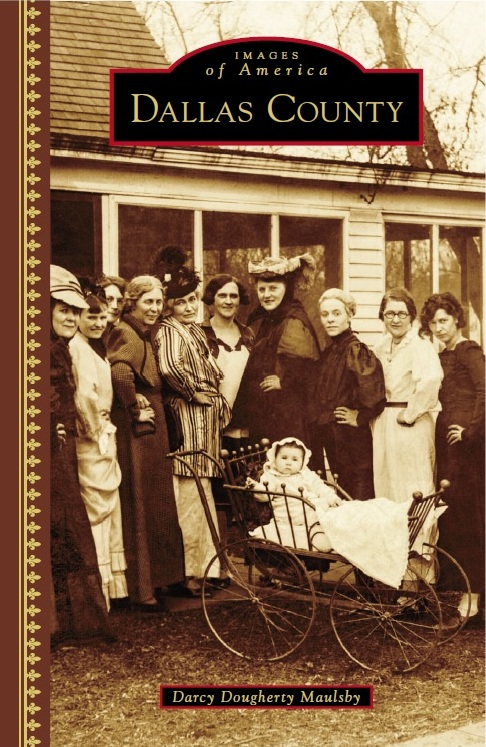
Why I’m Using a Powerful 500-Year-Old Technology to Make History–And You Can, Too
It’s always an exciting–yet nerve-wracking–moment of truth when months of research, writing and hard work end up at the one place where I have no more control—the printing press. There’s no turning back now for “Dallas County,” my third non-fiction Iowa history book, which is being printed as we speak by Arcadia Publishing, which specializes in hyper-local history. Can’t wait to show you the final result around Sept. 4!
I love the tried-and-true, old-school format of a printed, hard-cover book to share intriguing photos and the rich history of Dallas County, located just west of Des Moines. No Iowa county has influenced American history more than Dallas County. It propelled Harry Truman to an unlikely victory in the 1948 presidential campaign, following a fiery speech he delivered to 100,000 farmers on a sweltering September day at the National Plowing Match near Dexter. (Read all it about it here–along with my interview of a man who was there and took President Truman for a ride on his bulldozer!)

While Bonnie and Clyde escaped from the July 24, 1933, shootout with the law at the abandoned Dexfield amusement part north of Dexter, Clyde’s older brother, Buck, (shown here lying on the ground) was mortally wounded and died five days later at Kings Daughters Hospital in Perry. Buck’s wife, Blanche, was also captured at Dexfield.
Just 15 years earlier, a shoot-out near Dexfield Park marked the beginning of the end for infamous outlaws Bonnie and Clyde and the notorious Barrow Gang. (Yes, I was able to track down a lot of the crime scene photos and include them in the book, thanks to the wonderful volunteers at the terrific little Dexter Museum.)
The big-time names that have had a brush with Dallas County history don’t stop there. Dallas County has produced several major-league baseball players (among them Bob Feller and Hal Manders), a US congressman (David Young), and Nile Kinnick, the 1939 Heisman Trophy winner and University of Iowa football legend whose grandfather George Clarke, of Adel, served as Iowa’s governor from 1913 to 1917.
Today, Dallas County is one of the fastest-growing counties in America and remains a region of opportunity with a rich heritage of small-town living, farming, coal mining, and the immigrant experience. (If you like, you can pre-order the book on Amazon. If you want to wait for a signed copy, I’ll be selling them soon through my online store at my website.)
Pushing back against the dominance of digital
If you’ve got stories to share, whether for a business or for your own personal stories, why not take a look at a traditional book, or some other printed format? The print revolution is back in a big way. (Check out this great article to see what I mean.)
While digital technology swept the publishing world with the emergence of the ebook starting in 1999, inspiring some to proclaim the death of the printed book, ebook sales are plateauing. Sales of printed books are once again on the rise.
Printed books aren’t the only part of this intriguing phenomenon. Vinyl records are enjoying a rebirth, as well. This trend toward the analogue, particularly among millennials, could reflect a desire to connect to simple, tangible, non-digital things in our fast-paced, high-tech world. Perhaps it’s more of a longing to be unplugged now and then and occasionally tuned out. Whatever it foretells, the news that printed books are back is welcome here!
Want more?
Thanks for stopping by. I invite you to read more of my blog posts if you want more more intriguing Iowa stories and history, along with Iowa food, recipes and tips to make you a better communicator. If you like what you see and want to be notified when I post new stories, be sure to click on the “subscribe to blog updates/newsletter” button at the top of this page. Feel free to share this information with friends and colleagues who might be interested, too.
 If you’re hungry for more stories of Iowa history, check out my top-selling “Culinary History of Iowa: Sweet Corn, Pork Tenderloins, Maid-Rites and More” book from The History Press, as well as my Calhoun County” book from Arcadia Publishing, which showcases the history of small-town and rural Iowa. Order your signed copies today! Vintage and rural Iowa postcards are available in my online store, too.
If you’re hungry for more stories of Iowa history, check out my top-selling “Culinary History of Iowa: Sweet Corn, Pork Tenderloins, Maid-Rites and More” book from The History Press, as well as my Calhoun County” book from Arcadia Publishing, which showcases the history of small-town and rural Iowa. Order your signed copies today! Vintage and rural Iowa postcards are available in my online store, too.
Let’s stay in touch. I’m at darcy@darcymaulsby.com and yettergirl@yahoo.com.
P.S. Thanks for joining me. I’m glad you’re here.
@Copyright 2017 Darcy Maulsby & Co.
About me:
Some people know me as Darcy Dougherty Maulsby, while others call me Yettergirl. I grew up on a Century Farm between Lake City and Yetter and am proud to call Calhoun County, Iowa, home. I’m an author, writer, marketer, business owner and entrepreneur who specializes in agriculture. Learn more at www.darcymaulsby.com.
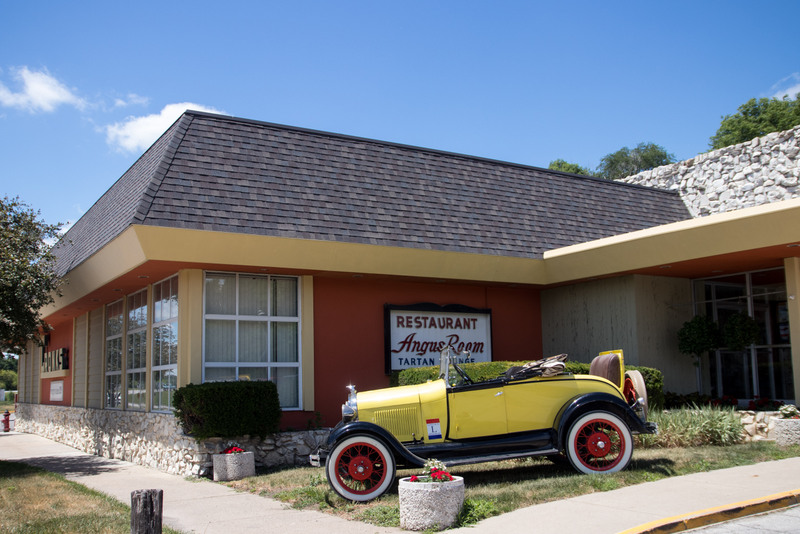
Cruising Through Forgotten Iowa History on Lincoln Highway
If you ever travel U.S. Highway 30 across Iowa, you’re never far away from the Lincoln Highway, if not right on top of it. If you’ve ever driven on Interstates 80 or 35, you’re also enjoying a legacy of fast, efficient transportation that took root with the Lincoln Highway more than 100 years ago.
I was reminded of the Lincoln Highway’s pivotal role when I shared my “Culinary History of Iowa” program with 100+ Lincoln Highway enthusiasts from New York to California who met in Denison from June 20-24 for the Lincoln Highway Association’s 2017 annual conference. As attendees shared their stories with me, it was clear the Lincoln Highway’s magic hasn’t waned through the decades.
Perhaps we should all thank the founders of the Lincoln Highway for helping get rural Iowa out of the mud. Oh, that mud!
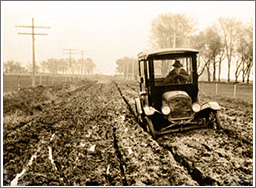
It’s obvious why Iowa needed to get out of the mud 100+ years ago.
As late as 1912, road conditions in the United States and Iowa were often deplorable, especially in rural areas. Few roads in the countryside were graded, and maintenance fell to those who lived along them.
The lack of paved roadways meant travel was always dominated by the weather. In wet weather, roads turned to mud and became impassable. During the winter months, you could be stranded on the farm for weeks if snowdrifts blocked the roads.
Iowans, like most Americans, were frustrated by poor road conditions, especially as the automobile’s popularity took off. Indiana native Carl Graham Fisher envisioned a solution. A tireless promoter of the automobile industry, Fisher had a track record of success, having joined a group of Indianapolis businessmen who invested in what became the Indianapolis Motor Speedway.
At a dinner meeting in 1912 in Indianapolis, Fisher proposed the idea of a highway that would span America from coast to coast. Stretching nearly 3,400 miles, this “rock highway” named in honor of President Abraham Lincoln would follow the shortest, fastest, most practical route. Fisher’s goal was to finish the highway by the 1915 Panama-Pacific Exposition. The highway’s path would run from New York City to the Exposition’s host city of San Francisco.
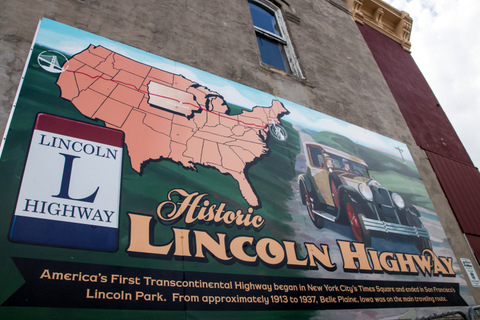
Belle Plaine, Iowa, celebrates its rich Lincoln Highway history.
Established in 1913, the Lincoln Highway transformed automobile travel from a tortuous journey to an exciting adventure. In Iowa, the Lincoln Highway was built from Clinton to Council Bluffs, connecting the Main Streets of 43 communities along the way.
As the first coast-to-coast highway, the Lincoln Highway demonstrated the power of good roads for transportation and commerce. It accelerated the Good Roads Movement, which helped get Iowa and other states out of the mud. On a national scale, the Federal Highway Administration and interstate highway system decades later marked the culmination of these efforts.
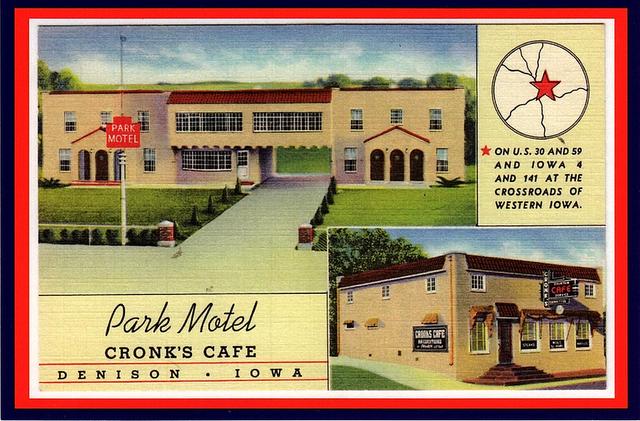
This vintage postcard shows the historic Park Motel and Cronk’s Cafe in Denison along the Lincoln Highway.
While interstates often offer the fastest way to crisscross Iowa today, I’ve been taking the backroads, including the Lincoln Highway, on some of my recent excursions around Iowa. I got a kick out of “Travel Tips from the Past” that the Iowa Lincoln Highway Association recently posted on its website and also appeared in a Washington Post article. While these road-trip gems were first promoted in the early 1900s by etiquette maven Emily Post and fellow motorists Effie Gladding and Beatrice Larned Massey, they still hold true today:
• Stop on a whim. If you see an intriguing café, go in. I recently stopped at the Lincoln Café in Belle Plaine and enjoyed a delicious bowl of vegetable beef and noodle soup, an Italian beef sandwich and coleslaw, along with a side of history. This café has served locals and travelers since 1928.
• Pause to take in the view. It usually takes me awhile to get to my destination, because I stop often to capture rural Iowa’s beauty with my camera.
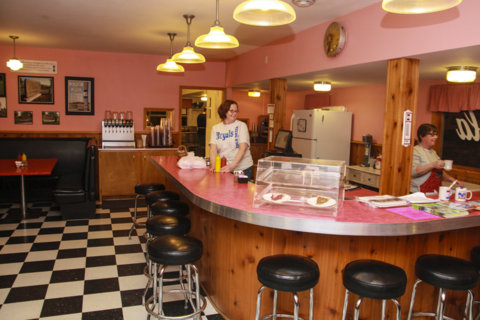
The Reed-Niland Corner in Colo has served travelers since the 1920s and is likely the only remaining spot on the entire Lincoln Highway that still features a café (try their homemade ham-and-bean soup and a slice of pie!), vintage gas station and motel.
• Eat local. I love supporting locally-owned businesses that preserve the history of the Lincoln Highway, from the Santa Maria Winery in Carroll to the fabulous Reed-Niland Corner in Colo. This Story County treasure has served travelers since the 1920s and is likely the only remaining spot on the entire Lincoln Highway that still features a café (try their homemade ham-and-bean soup and a slice of pie!), vintage gas station and motel.
No matter where your summer road trips take you in Iowa and beyond, long live the legacy of the iconic Lincoln Highway!
This story first appeared in my Farm News column in June 2017.
Want more?
Thanks for stopping by. I invite you to read more of my blog posts if you want more more intriguing Iowa stories and history, along with Iowa food, recipes and tips to make you a better communicator. If you like what you see and want to be notified when I post new stories, be sure to click on the “subscribe to blog updates/newsletter” button at the top of this page. Feel free to share this information with friends and colleagues who might be interested, too.
If you’re hungry for more stories of Iowa history, check out my top-selling “Culinary History of Iowa: Sweet Corn, Pork Tenderloins, Maid-Rites and More” book from The History Press, as well as my Calhoun County” book from Arcadia Publishing, which showcases the history of small-town and rural Iowa. Order your signed copies today! Iowa postcards are available in my online store, too.
Let’s stay in touch. I’m at darcy@darcymaulsby.com.
P.S. Thanks for joining me. I’m glad you’re here.
@Copyright 2017 Darcy Maulsby & Co.
About me:
Some people know me as Darcy Dougherty Maulsby, while others call me Yettergirl. I grew up on a Century Farm between Lake City and Yetter and am proud to call Calhoun County, Iowa, home. I’m an author, writer, marketer, business owner and entrepreneur who specializes in agriculture. Learn more at www.darcymaulsby.com.
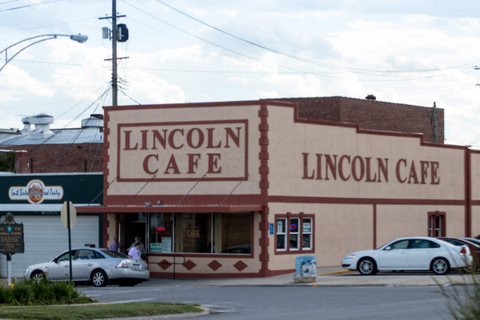
The historic Lincoln Cafe in Belle Plaine has served home-cooked food along the Lincoln Highway since 1928.
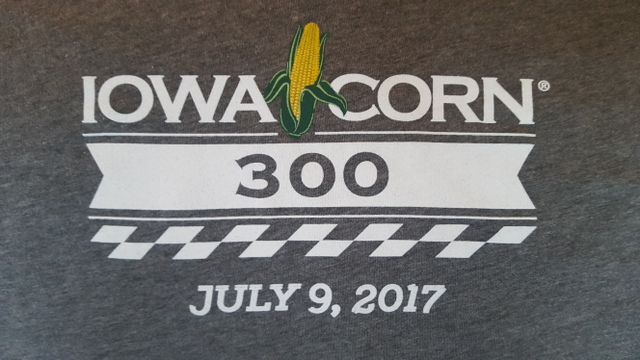
Ethanol:Passion by the Gallon
What drives you? When I stopped by the Iowa Corn 300 at the Iowa Speedway on July 9, ethanol wasn’t the only driving force as Indy cars roared past the grandstand.
While the cars shot around the oval at speeds over 200 miles per hour, covering the length of a football field in less than a second, I was also struck by the passion that drives today’s corn-grower leaders. It’s a spirit fueled by a strong sense of history and a focus on the future as the Iowa Corn Growers Association (ICGA) celebrates its 50th anniversary.
“Long before the Iowa Corn 300, the whole ethanol industry got started by visionaries who were tired of being captive to low corn prices and wanted to find a way to write their own ticket,” said Mark Heckman, a farmer from West Liberty and chairman of the Iowa Corn Promotion Board (ICPB) who visited with me during the race.
Those visionary farmers included Thurman Gaskill, a Corwith farmer who served as ICPB’s first president in 1978. When this future ICGA president and state senator pumped Iowa’s first tank of corn-based ethanol (called gasohol back then) in the eastern Iowa town of Clarence, many people viewed this new fuel as just a corn-fed gimmick.
Corn growers like Gaskill were undeterred in their quest to provide a solution to the 1970s energy crisis and low corn prices.
Iowa Corn leaders found five filling stations willing to sell gasoline mixed with 10 percent ethanol in Clarence, Cumberland, Osage, Peterson and Fort Dodge. The fuel cost about 70 cents per gallon, and customers drove away with a free “This car powered by Gasohol” bumper sticker. The Fort Dodge station sold about 350 gallons in the first hour, mostly to farmers who pulled up in their pickups, according to ICGA.
Thanks to tireless efforts by Iowa corn grower leaders, ethanol grew from a dream into a reality. Here’s a look back with ICGA’s timeline:
1982: The U.S. Environmental Protection Agency (EPA) announces standards to reduce lead content in gasoline, paving the way for ethanol’s use as a replacement octane booster.
1985: The Ford Motor Company rolls out the first vehicles designed to run on unleaded gasoline.
1988: Iowa Governor Terry Branstad orders all vehicles in the state government’s fleet to run on ethanol-blended fuel.
1990: The federal Clean Air Act is amended to mandate the use of clean-burning additives to fuel, while the Iraqi invasion of Kuwait focuses attention on U.S. oil supplies and the importance of home-grown ethanol.
1996: The ICPB establishes Iowa’s first E-85 (85 percent ethanol) fueling station in West Burlington. (I admit—I love my flex-fuel SUV and always look for E-85 pumps when I’m on the road.)
1999: The ICPB hosts workshops with ethanol plant representatives and other ethanol supporters to develop new farmer-owned ethanol ventures.
2004: Iowa becomes the #1 ethanol-producing state for the first time.
2005: Congress creates the Renewable Fuel Standard (RFS) to help reduce America’s dependence on foreign oil, cut greenhouse gas emissions and spur economic development, especially in rural America.
2007: Iowa Corn develops a partnership with the new Iowa Speedway for the Iowa Corn Indy 250 (now the Iowa Corn 300) to promote higher blends of corn-ethanol fuels in high-performing engines.
2008: Corn prices soar to historic levels, triggering the food-versus fuel ethanol debate as food prices also spike.
2011: NASCAR adopts the use of E-15.
2017: More than 15 billion gallons of ethanol are produced annually in America, and ethanol is used in more than 95 percent of the fuel sold in America.
While I heard a lot about ethanol’s power and performance at the Iowa Corn 300, passion is also key to this remarkable story. “As we think back to the vision that earlier generations of farmers had for the corn industry and ethanol, it’s clear we need to keep promoting and reinvesting to move forward,” Mark Heckman emphasized to me. “Passion drives this industry.”
This column first appeared in Farm News in July 2017.
Want more?
Thanks for stopping by. I invite you to read more of my blog posts if you want more more intriguing Iowa stories and history, along with Iowa food, recipes and tips to make you a better communicator. If you like what you see and want to be notified when I post new stories, be sure to click on the “subscribe to blog updates/newsletter” button at the top of this page. Feel free to share this information with friends and colleagues who might be interested, too.
If you’re hungry for more stories of Iowa history, check out my top-selling “Culinary History of Iowa: Sweet Corn, Pork Tenderloins, Maid-Rites and More” book from The History Press, as well as my Calhoun County” book from Arcadia Publishing, which showcases the history of small-town and rural Iowa. Order your signed copies today! Iowa postcards are available in my online store, too.
P.S. Thanks for joining me. I’m glad you’re here.
@Copyright 2017 Darcy Maulsby & Co.
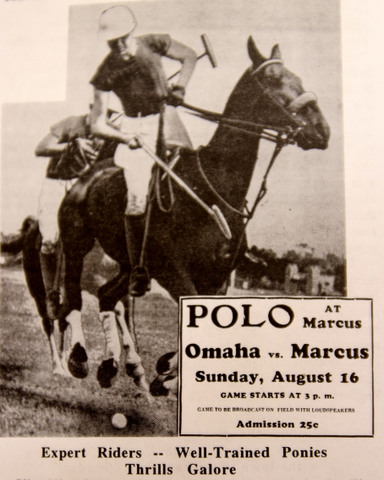
Small – Town Iowa Polo Teams Thrilled Depression – Era Crowd
What comes to mind when you think of polo? English royalty, perhaps, since this ancient, unique blending of athletic talents between horse and rider helped polo become the “sport of kings.”
Yet there was a time in northwest Iowa when polo reigned as the sport of the common people. It happened in an era when rural Iowans desperately needed a diversion, if only for a Sunday afternoon, from life’s harsh realities.
It all started in the early 1930s in the small Cherokee County town of Marcus. I first heard about this intriguing tidbit of local history from Beth Kingdon, director of the Marcus Public Library, when I shared my “Culinary History of Iowa” program at the library. “Since you like Iowa history, you might be interested in this,” said Beth, as she opened the 700+-page book “Pride in the Past Faith in the Future: A Historical View of Marcus, Iowa.”
Sure enough, right there on pages 157-158 a section titled “Marcus Polo Team” spun a long-forgotten tale of rural Iowa. “The Marcus Polo Team made history in the 1930s for the small but prosperous farm community, providing thrilling Sunday entertainment for residents far and near,” stated the article.
No doubt there were thrills galore, since there’s nothing subtle about polo. This is in-your-face, aggressive horsemanship at its best, demanding power, intense speed, balance, coordination, quick reflexes, strategy, well-trained horses and expert riders.
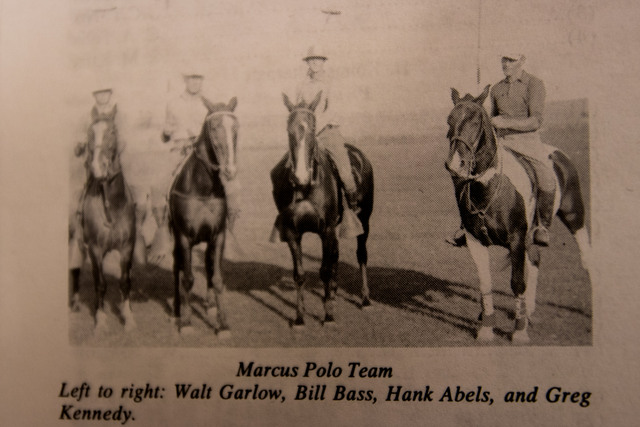 “Shucking corn develops a wrist, and that’s what polo takes”
“Shucking corn develops a wrist, and that’s what polo takes”
The Marcus team consisted of local businessmen and farmers, including Gregory Kennedy, Kenneth (Kim) Bancroft, W.W. (Bill) Bass, Henry (Hank) Abels, Walter Garlow and Glenwood French (the alternate). The Marcus Polo Club boasted a “splendid field” just a mile and a half south of town, where polo matches were played on the W.E. Wiley farm (managed by Walt Garlow). “Two Marcus youths, Jimmy Hogue and Roy (Junior) Williams, were full-time groomsmen for Kennedy and Garlow,” the history noted.
Polo was introduced in Marcus around 1931. By the early to mid-1930s, there were polo teams and/or polo fields in Paullina, Primghar, Clarion, Sheldon, Spencer and beyond, including the famous Barnes Bros. polo team from the Cherokee/Peterson area.
The Marcus Polo Club gained a strong reputation by beating professional teams from Minnesota to Omaha and clinched the Iowa championship by defeating the Des Moines team at the Iowa State Fair. The Marcus Polo Club eventually expanded into two teams, the Purple Team and the Orange Team, which traveled as far away as Sioux City and Pierre, South Dakota, to compete.
The famed Marcus team even caught the media’s attention. In 1936, Country Home magazine devoted a page-long article to document this fascinating phenomenon on the Iowa prairie. Here’s a snippet from Paul T. Sturges’ feature story:
“But polo,” I objected. “Isn’t that a millionaire’s game?
“Practically everyone seems to think so,” said Kenneth Bancroft. “But around here, most of our players are farmers.”
We were talking in Bancroft’s meat market in Marcus. On the wall, pictures of sleek polo ponies flashed white-helmeted riders, a team as proud as the best of them.
“No, don’t get the idea polo is just a rich man’s game,” continued Bancroft.
“Bill Ginger started us going. We used farm horses for mounts. Bill lives up a Gaza, Iowa. He’s farming. Had played polo in the Black Hills, enough at least to get polo in his blood.”
 To make a polo mallet, Bill unearthed an old binder roller, sawed out a chunk, drilled a hole into it, and inserted a lengthy of hickory wood into this homemade affair. “First thing they know, people saw Bill out in his pasture on horseback larruping a ball around,” Bancroft said.
To make a polo mallet, Bill unearthed an old binder roller, sawed out a chunk, drilled a hole into it, and inserted a lengthy of hickory wood into this homemade affair. “First thing they know, people saw Bill out in his pasture on horseback larruping a ball around,” Bancroft said.
Joe Hey, the harness maker, braided whang leather loops on the mallets’ handles. A local pasture provided the playing field, and it was game on. “On stock saddles cinched to regular farm horses, the boys, when the farm work was done, would make for the pasture and have a barrel of fun. The players lined up in center field. The umpire throws the ball out, and it’s in play until it crosses the goal.”
Those Iowa farmers knew their style of polo was a bit—unique. “If today’s crack polo players could have seen us then, they would have died laughing,” Bancroft said. “Imagine horses weighing 1,800 pounds galloping after a little ball.”
The rural Iowa polo players’ gear made the game affordable, from homemade mallets to second-hand Army saddles. “It was inexpensive,” Bancroft noted. “The town boys boarded their ponies with the farmers, who, in turn, found the extra horses came in handy during cultivating time. Corn-shucking time, our players would use their horses on the wagon and then in the evenings would throw on saddles for a whirl at polo. Shucking corn develops a wrist, and that’s what polo takes.”
Chukkers and shuckers
The talented Marcus Polo Club beat professional teams from Minnesota to Omaha and clinched the Iowa championship by defeating the Des Moines team at the Iowa State Fair. The Marcus Polo Club eventually expanded into two teams, the Purple Team and the Orange Team, which traveled as far away as Sioux City and Pierre, South Dakota, to compete.
In the 1930s, just like now, each polo team consisted of four riders and their mounts. The ideal polo pony combined intelligence, speed and stamina, with the ability to accelerate, stop and turn quickly. All horse breeds were allowed to play polo, but a majority ranged from 15-16 hands tall. (A hand is equal to 4 inches.)
“Each player [with the Marcus Polo Club] has two or more ponies, and, in general, have an excellent string of horses,” noted the Marcus history book.
The story also cited Slim Nix, the “wild-riding cowboy,” captain, coach and trainer of Paullina Pirates polo team, who said “a man gives his wife credit for half she does, but a polo player gives his pony credit for 75 percent of his good playing.”
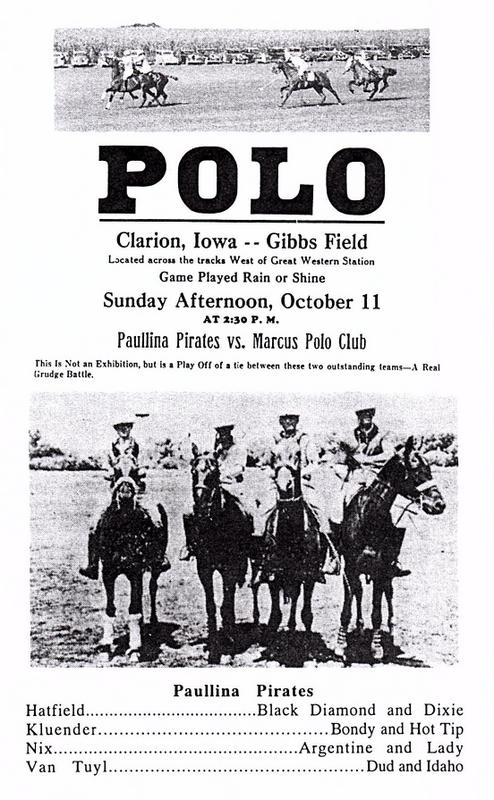 Some of the Paullina players paid big money for the best ponies and gear. Dr. G.E. Van Tuyl played a gray horse, which he purchased in Idaho for $1,000. (That’s roughly $18,000 in today’s money.)
Some of the Paullina players paid big money for the best ponies and gear. Dr. G.E. Van Tuyl played a gray horse, which he purchased in Idaho for $1,000. (That’s roughly $18,000 in today’s money.)
Horses and riders competed on an outdoor polo field measuring 300 by 160 yards. Outdoor polo games consisted of six chukkers (periods) of 7 minutes and 30 seconds each. The main objective? Defeat your opponent by scoring the highest number of goals.
What a spectacle this must have been during the Great Depression, when crowds of rural Iowans flocked to polo fields across the state. Though admission cost 25 cents to see the Marcus team play tough competitors like Omaha more than 80 years ago, the promised rewards were almost irresistible. “These horses can turn on a dime and give you 8 cents in change,” one ad proclaimed. “Everyone come and see this thrilling game.”
This column originally appeared in Farm News July 2017.
Want more?
Thanks for stopping by. I invite you to read more of my blog posts if you want more more intriguing Iowa stories and history, along with Iowa food, recipes and tips to make you a better communicator. If you like what you see and want to be notified when I post new stories, be sure to click on the “subscribe to blog updates/newsletter” button at the top of this page. Feel free to share this information with friends and colleagues who might be interested, too.
If you’re hungry for more stories of Iowa history, check out my top-selling “Culinary History of Iowa: Sweet Corn, Pork Tenderloins, Maid-Rites and More” book from The History Press, as well as my Calhoun County” book from Arcadia Publishing, which showcases the history of small-town and rural Iowa. Order your signed copies today! Iowa postcards are available in my online store, too.
P.S. Thanks for joining me. I’m glad you’re here.
@Copyright 2017 Darcy Maulsby & Co.
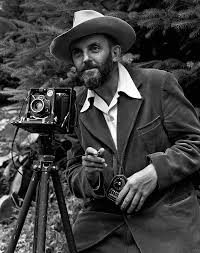
Show Up, Speak Up, Don’t Give Up

Ansel Adams’ “Monolith—the Face of Half Dome” (shot in Yosemite National Park)

“Moonrise, Hernandez, New Mexico” captured by Ansel Adams
Even if you can’t name many famous photographers, you’ve probably heard of Ansel Adams. While this celebrated nature photographer was a San Francisco native, I believe Adams had the heart of a farmer. His work offers insights on how we can be more effective “ag-vocates.” Actually, his example will resonate with any of you who have a cause you’re passionate about.
I’ve become more familiar with Adams, a pioneer in America’s conservation movement, through a photography class I’m taking at Reiman Gardens in Ames. Adams viewed nature as precious and wanted to give conservation greater value in society. His stunning black and white landscape photographs of the American West portray this spirit.
Adams’ work also reflects the countless years he spent studying the places he photographed. It’s clear his iconic images like “Monolith—the Face of Half Dome” (shot in Yosemite National Park) and “Moonrise, Hernandez, New Mexico” were captured at the precise moment when the image would capture the most beauty and convey the greatest emotional impact.
Adam’s unforgettable images reflect the soul of someone who was intimately familiar with the region’s weather patterns. Someone in tune with the rhythms of nature. Someone who cherished the land and pondered people’s relationship to the land.
Sounds like an Iowa farmer to me.
Just as Adams’ photography forever changed how people view nature, we, too, can influence how people perceive farmers and our relationship to the land. Here are three tips to get started:
1. Show up. Like Adams, who returned time and again to photograph the places he loved, ag-vocates must show up. Never forget the wisdom of filmmaker Woody Allen, who noted that “80 percent of success is just showing up.” Good places to start are local grassroots organizations like the Iowa Corn Growers Association, the local county Farm Bureau, Iowa Soybean Association, Iowa Cattlemen’s Association, Iowa Pork Producers Association, Iowa Turkey Federation, Practical Farmers of Iowa or other ag groups. Don’t stop with your membership. Be willing to volunteer and serve in leadership positions, too. Everyone, including you, has something of value to give.
2. Speak up. Adams used his compelling visual images to speak up for the things he held dear in life. If you take photos of life on the farm, you don’t have to be the next Ansel Adams before you share your images on social media, at the county fair, etc. Not a photographer? Use your voice to write letters to the editor on timely topics affecting agriculture. Speak up at meetings when ag issues are at stake. There’s a chance you may be one of the few voices sharing agriculture’s perspective, which makes your message even more essential. Last summer I attended a gathering near Redfield where Bill Stowe of the Des Moines Water Works spoke about how farmers are ruining Iowa’s water quality. I knew I was one of the few farmers in the group of about 30 people, but I stood up, introduced myself and challenged some of his assumptions as I explained the conservation practices on my family’s Century Farm in Calhoun County and told how we received an Iowa Farm Environmental Leader Award at the 2016 Iowa State Fair. While I was scared to share my story at first, I was surprised to receive a round of applause from the group.
3. Don’t give up. Adams, who died in 1984, spent a lifetime portraying his philosophical vision of the land and people’s relationship to it. Just like Adam’s work, ag-vocating isn’t a once-and-done job. It requires patience and persistence. By showing up, speaking up and not giving up, you, too, have the power to leave a legacy that forever changes the way others view the world.
This originally appeared in my column in June 2017 in Farm News.
Want more?
Thanks for stopping by. I invite you to read more of my blog posts if you want more more intriguing Iowa stories and history, along with Iowa food, recipes and tips to make you a better communicator. If you like what you see and want to be notified when I post new stories, be sure to click on the “subscribe to blog updates/newsletter” button at the top of this page. Feel free to share this information with friends and colleagues who might be interested, too.
If you’re hungry for more stories of Iowa history, check out my top-selling “Culinary History of Iowa: Sweet Corn, Pork Tenderloins, Maid-Rites and More” book from The History Press, as well as my Calhoun County” book from Arcadia Publishing, which showcases the history of small-town and rural Iowa. Order your signed copies today! Iowa postcards are available in my online store, too.
Let’s stay in touch. I’m at darcy@darcymaulsby.com, and yettergirl@yahoo.com.
About me:
Some people know me as Darcy Dougherty Maulsby, while others call me Yettergirl. I grew up on a Century Farm between Lake City and Yetter and am proud to call Calhoun County, Iowa, home. I’m an author, writer, marketer, business owner and entrepreneur who specializes in agriculture. Learn more at www.darcymaulsby.com.
P.S. Thanks for joining me. I’m glad you’re here.
@Copyright 2017 Darcy Maulsby & Co.

Lightner on Leadership: “Everyone Has Something to Give”
My friend Deb Lightner calls it her ah-ha moment. While she was well acquainted with Stewart Memorial Community Hospital (SMCH) in Lake City through her 12 years of service on the hospital board, it became personal when a good friend received care at SMCH.
“My friend received a survey from SMCH and was asked if there were any staff members she’d like to lift up for special recognition,” said Lightner of Lohrville, whose friend had been diagnosed with breast cancer. “My friend said she couldn’t single out any one person, because they were all wonderful.”
This experience highlighted the value of compassionate care close to home and reinforced Lightner’s commitment to SMCH, where she served on the board from 2005 to her retirement this spring.
“It’s wonderful to have access to high-quality healthcare in our community. Having SMCH here also does so many other good things for our area, from attracting medical and business professionals to providing good jobs. Our communities also benefit when people connected with SMCH fill leadership roles, from city councils to school boards.”
Lightner is a true servant leader, said Cynthia Carstens, president/CEO of SMCH. “Deb has the skills, knowledge and heart to tackle challenges and make sure that needs are addressed. She adheres to the principles of listening, empathy, foresight, shared decision making, a willingness to challenge the status quo and building community.”
Carstens cited how Lightner recognized a need for a Meals on Wheels program for the Lohrville community. “She worked with our organization to get that set up and delivered many of those meals herself until there no longer was a need.”
Five ways SMCH is raising the bar
This spirit of service is reflected throughout SMCH, a critical access hospital affiliated with UnityPoint Health. Lightner is proud that SMCH is raising the bar in five keys ways, including:
1. Culture change. SMCH worked with the Studer Group® to build a sustainable culture that promotes accountability, fosters innovation and consistently delivers a great patient experience. This culture helps attract top talent to SMCH, a non-profit organization that employs approximately 185 full-time staff in Lake City, Lake View, Rockwell City and Gowrie. “Other hospitals around Iowa are amazed at SMCH’s ability to recruit doctors and other medical professionals,” Lightner said.
2. Diverse leadership. Strong leadership is the key to any successful organization, said Lightner, who farms with her family near Lohrville. Along with the SMCH leadership team, the SMCH board includes people with a diverse array of skills. “The board has included farmers, educators, pastors, small-business owners, bank presidents and others who care about the community and the organization,” Lightner said. “Good board members also show a willingness to learn, ask questions and speak up.”
3. Inclusion. While Lightner encourages people to serve on the SMCH board, there are other ways to get involved. SMCH offers a hospital auxiliary group where members can volunteer at the SMCH gift shop, help with fundraising events and more.
4. Responsive solutions. Wellness and preventative healthcare are priorities at SMCH. “Many of SMCH’s Lunch Connection educational programs and other wellness programs are developed in response to issues the community cares about,” Lightner said.
5. Forward focus. As medical technology advances and outpatient services become much more prevalent, this presents complex, challenging issues for the hospital, said Lighter, who has a strong background in finance. “While we’re still one of the hospitals that delivers babies, the trend away from in-patient care means SMCH is looking at new ways to best serve our community and do it cost-effectively.”
Lightner remains a strong supporter of SMCH, even though her board term is completed. “It has been an honor to work with Deb, who is one of the strongest women I know,” Carstens said.
Lightner is currently exploring volunteer opportunities with the Peace Corps. “I never view community service as a chore,” she said. “Everyone has something to give.”
This originally appeared in the Hometown Pride section of the Fort Dodge Messenger, June 25, 2017.
Want more?
Thanks for stopping by. I invite you to read more of my blog posts if you want more more intriguing Iowa stories and history, along with Iowa food, recipes and tips to make you a better communicator. If you like what you see and want to be notified when I post new stories, be sure to click on the “subscribe to blog updates/newsletter” button at the top of this page. Feel free to share this information with friends and colleagues who might be interested, too.
If you’re hungry for more stories of Iowa history, check out my top-selling “Culinary History of Iowa: Sweet Corn, Pork Tenderloins, Maid-Rites and More” book from The History Press, as well as my Calhoun County” book from Arcadia Publishing, which showcases the history of small-town and rural Iowa. Order your signed copies today! Iowa postcards are available in my online store, too.
Let’s stay in touch. I’m at darcy@darcymaulsby.com, and yettergirl@yahoo.com.
P.S. Thanks for joining me. I’m glad you’re here.
@Copyright 2017 Darcy Maulsby & Co.
About me:
Some people know me as Darcy Dougherty Maulsby, while others call me Yettergirl. I grew up on a Century Farm between Lake City and Yetter and am proud to call Calhoun County, Iowa, home. I’m an author, writer, marketer, business owner and entrepreneur who specializes in agriculture. Learn more at www.darcymaulsby.com.
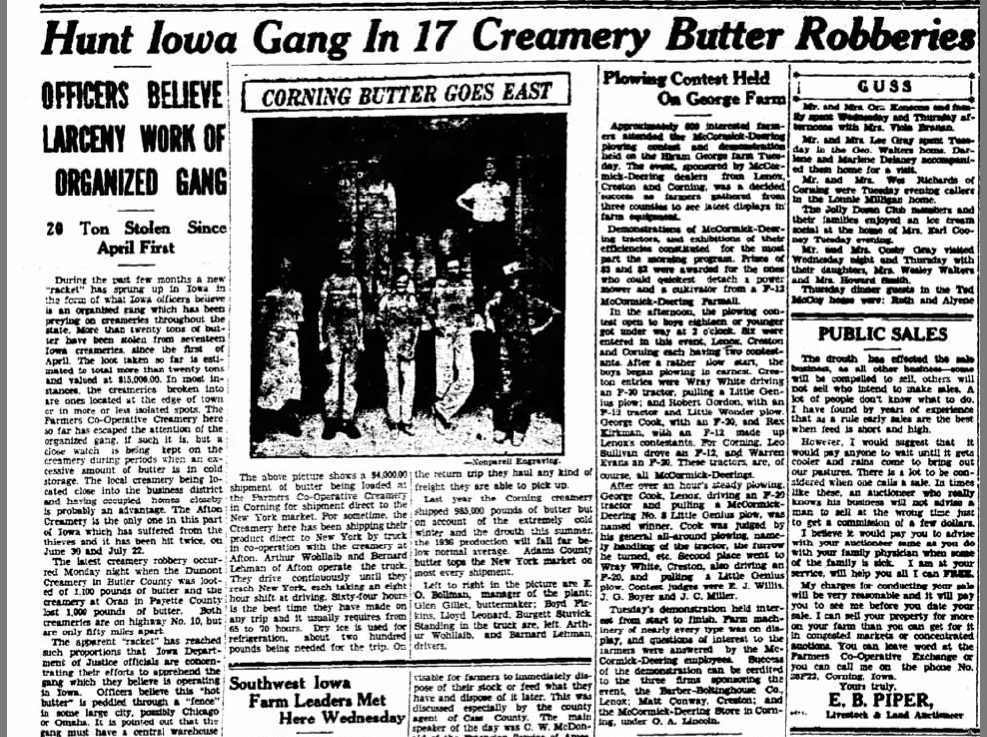
Busting the Iowa Butter Gang
“Hey, did you ever hear of the Iowa Butter Gang?” It’s the last question I expected to hear during my recent “Culinary History of Iowa” book signing in West Des Moines, and it definitely caught my attention.
It came from Jan Kaiser, a former Des Moines librarian who had first “encountered” the nefarious gang a few years ago through research into 70+-year old newspaper archives.
Turns out that crime came in many forms during the Great Depression. Back then, butter was big business in rural Iowa. Not only was Iowa a leading dairy state, but hundreds of Iowa creameries produced high-quality butter that helped make Iowa a top shipper of butter into the New York City area, I learned recently from Iowa Secretary of Agriculture Bill Northey.
While some Depression-era criminals robbed banks, some thieves in rural Iowa opted to rob creameries. A headline in the Aug. 6, 1936, edition of the Adams County Free Press newspaper announced, “Hunt for Iowa Gang in 17 Iowa Creamery Butter Robberies: Officers Believe Larceny Work of Organized Gang.”
The article noted that during the spring and summer of 1936, a new “racket” had sprung up in Iowa in the form of an organized gang that preyed on creameries throughout the state. By early August 1936, more than 20 tons of butter had been stolen from 17 Iowa creameries since early April 1936. “The loot taken so far is estimated to total more than 20 tons and is valued at $15,000,” noted the news article.
In most cases, the creameries that were broken into were located on the edge of town or in isolated spots. The gang’s targets in 1936 included:
• April 3, Palmer, 2,172 pounds
• April 8, Fenton, 3,440 pounds
• May 15, Fenton, 2,080 pounds
• May 28, Edgewood, 630 pounds
• June 4, Britt, 5,184 pounds
• June 12, Kimballton, 4,000 pounds
• June 20, Coulter, 4,095 pounds
• June 30, Afton, 2,200 pounds
• July 1, Hampton, 2,209 pounds
• July 3, Hubbard, 7,488 pounds
• July 8, Palmer, 3,553 pounds
• July 11, Randall, 2,304 pounds
• July 22, Afton, 2,764 pounds
• July 30, Nashua, 1,500 pounds
• July 31, Masonville, 2,228 pounds
• August 3, Dumont, 1,100 pounds
• August 3, Oran, 1,000 pounds
“It is believed that before each burglary, the creamery is selected by the gang and careful plans made,” stated the Adams County Free Press. “The robbers are evidently expert burglars and experience little difficulty in breaking into creameries. They use a truck and are gone with their loot before local officials know there has been a burglary.”
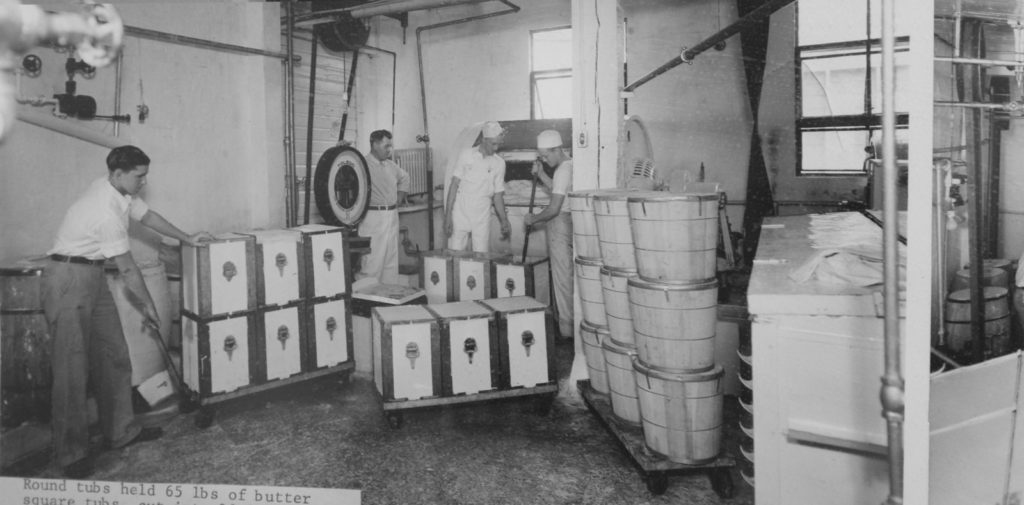
Butter making was big business in small-town creameries across Iowa in the 1930s, including this creamery in Somers (featured in my Calhoun County book). George Smith built Somers’ first creamery was built in 1900. In 1913 S. P. Petersen purchased and updated the creamery, which became a major business in town for many years. The round tubs in this photo each held 65 pounds of butter. This butter was sold to area stores. In Fort Dodge alone, about 2 tons of butter was sold each week. Butter from Somers was also sent to New York.
Peddling “hot butter”
The writer speculated that the gang must have a central warehouse, since butter is highly perishable. The apparent racket reached such epic proportions that Iowa Department of Justice officials concentrated their efforts to apprehend the gang. “Officers believe this ‘hot butter’ is peddled through a ‘fence’ in some large city, possibly Chicago or Omaha,” the writer noted.
(A fence is someone who knowingly buys stolen property for later resale, sometimes in a legitimate market. The fence acts as a middleman between thieves and the eventual buyers of stolen goods who may not be aware that the goods are stolen.)
The article continued, “The Farmers Co-operative Creamery here [in Corning] so far has escaped the attention of the organized gang, but a close watch is being kept on the creamery during periods when an excessive amount of butter is in cold storage.”
It’s no wonder locals were keeping a close watch. The Farmers Co-op Creamery shipped thousands of dollars of butter each year to the New York market. The Adams County Free Press reported that two local truck drivers would each take eight-hour driving shifts and drive straight through from Iowa to New York. The best time they made from Iowa to New York was 64 hours, although the trip usually took 65 to 70 hours.
About 200 pounds of dry ice were used for refrigeration during the trip. On the return trip, the drivers hauled any kind of freight they were able to pick up. In 1935, the Corning creamery shipped 985,000 pounds of butter, noted the newspaper article. Due to the harsh winter and summer drought of 1936, however, that year’s production was expected to fall far below average—a fact that made the butter robberies of 1936 even more devastating in rural Iowa.
Finally—a big break in the case
By August 1936, officers with the Iowa State Patrol (formed just a year earlier in 1935) and a group of northern Iowa vigilantes and deputy sheriffs had been driving the secondary and dirt roads nightly for the last two months, trying to catch the butter gang, according to the Des Moines Tribune (the capital city’s afternoon newspaper that ended in 1982).
Some promising leads ended in disappointment. In the summer of 1936, officers arrested Harvey Mighell of Holstein on suspicion that he was connected with the butter gang. He was taken to Audubon, where he was questioned and later released under $2,000 bond. Mighell denied having anything to do with the Iowa butter thefts.
Law enforcement officials got a big break, however, by late August 1936. A headline in the Aug. 29, 1936, edition of the Des Moines Tribune proclaimed “Iowa Butter Gang Crushed.”
Turns out an Omaha gang of six men and one woman stole some $30,000 worth of butter, cheese and eggs in a string of more than 30 robberies across Iowa in 1936. (The pilfered dairy products were worth nearly $525,000 in today’s money.) The butter was trucked to Omaha and was sold through a fence.
“Virtually every sheriff in northern Iowa has been on the case as well as several detectives of the Omaha police department and other Iowa town police departments,” the reporter noted.
Iowa prosecutors charged the gang with 32 robberies. Detectives recovered 70 tubs of butter, the Tribune reported, 66 of which had been stolen from a creamery in Wesley. All the cheese was lifted from Ionia, the story reported. Law enforcement officials took the dairy products and sold them through legitimate channels to packers in Omaha.
“Capture of the Butter Gang was the climax of one of the greatest Iowa manhunts in recent years,” officials told the newspaper.
One more try?
The story wasn’t over, though. Less than five years later, one of the original butter gang members tried to revive the scheme. Under the headline “Butter Theft Gang Thwarted,” the Jan. 15, 1941, issue of the Mason City Globe-Gazette reported the arrest of Bryon Green, 32, of Sioux City. “R.W. Nebergall, chief of the Iowa Bureau of Investigation, believed that Green was attempting to set up a new ‘butter theft gang’ in Iowa,” stated the article.
On Dec. 13, 1940, Green had been released from prison in Stillwater, Minnesota, after serving three and a half years for burglary. Within a few weeks of his release from prison, Green was arrested by Chicago police, who accused him of entering the Masonville, Iowa, creamery on January 9, 1941, and shipping 1,230 pounds of stolen butter to a Chicago firm.
Thus ended the saga of the infamous butter gangs that terrorized rural Iowa in the 1930s. Their nearly forgotten story faded into history, along with the small-town creameries that once inspired their notorious crime spree.
Want more?
Thanks for stopping by. I invite you to read more of my blog posts if you want more more intriguing Iowa stories and history, along with Iowa food, recipes and tips to make you a better communicator. If you like what you see and want to be notified when I post new stories, be sure to click on the “subscribe to blog updates/newsletter” button at the top of this page. Feel free to share this information with friends and colleagues who might be interested, too.
If you’re hungry for more stories of Iowa history, check out my top-selling “Culinary History of Iowa: Sweet Corn, Pork Tenderloins, Maid-Rites and More” book from The History Press, as well as my Calhoun County” book from Arcadia Publishing, which showcases the history of small-town and rural Iowa. Order your signed copies today! Iowa postcards are available in my online store, too.
Let’s stay in touch. I’m at darcy@darcymaulsby.com.
P.S. Thanks for joining me. I’m glad you’re here.
@Copyright 2017 Darcy Maulsby & Co.
About me:
Some people know me as Darcy Dougherty Maulsby, while others call me Yettergirl. I grew up on a Century Farm between Lake City and Yetter and am proud to call Calhoun County, Iowa, home. I’m an author, writer, marketer, business owner and entrepreneur who specializes in agriculture. Learn more at www.darcymaulsby.com.
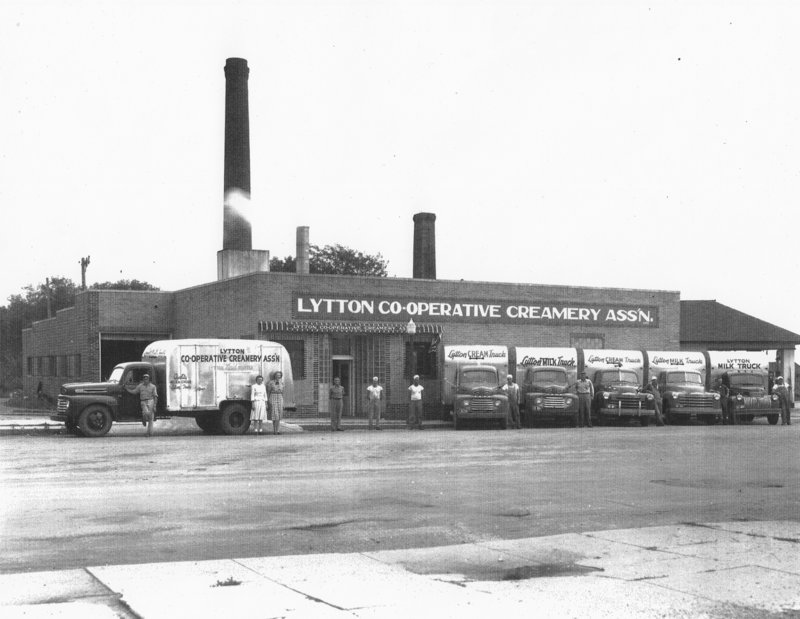
The Lytton Cooperative Creamery Association (featured in my Calhoun County book) was organized in June 1933. Capital for the new venture came from local farmers, who subscribed for shares on a basis of $5 per cow. In 1936, the creamery produced 110,000 pounds of butter. Grade A milk was processed, bottled, and distributed under the name “Lytton Maid” until this was discontinued in 1963. The plant closed in August 1979.
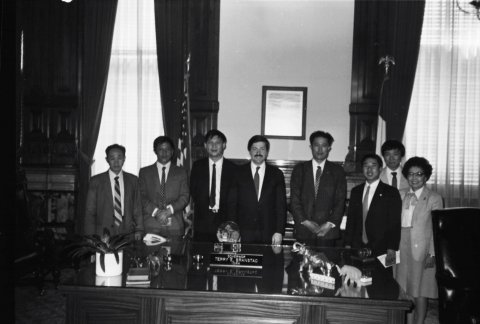
Remembering Ambassador Branstad’s Legacy from the 1980s Farm Crisis in Iowa
A morning talk-show host on WHO Radio in Des Moines posed an interesting question when former Iowa Governor Terry Branstad was confirmed as the U.S. ambassador to China on May 22, 2017. The broadcaster asked what might define Branstad’s enduring legacy, and he suggested it may be Branstad’s service during the 1980s Farm Crisis.
The more I thought about it, the more I agreed. I was just a kid in the 1980s Farm Crisis and didn’t really understand what was happening, but I knew it was bad. I remembering writing a poem about the Farm Crisis in 7th grade in 1987 for my contribution for a time capsule that was buried in Lake City.
Sheltered as I was from my family’s financial realities, I had no idea my dad only made $800 one year during the peak of the Farm Crisis. Still, that was far better than what some other farmers were experiencing. As one farmer told me during a recent interview about his family’s Century Farm, the thing he dreaded the most during the Farm Crisis was the phone ringing. “You never knew who it might be or what bad news it might be,” he said.
The Farm Crisis was just starting its brutal transformation of Iowa agriculture when Terry Branstad was first elected governor of Iowa in 1982. This new era was a far cry from the heady go-go days of the 1970s, when agriculture was booming, and making good money in farming was not only possible, but almost easy.
Farmers were hurting
By the early 1980s, however, a combination of national and international factors, including a Federal Reserve Board policy of high interest rates to fight inflation and a grain embargo against the Soviet Union, devastated the farm economy. Crop prices to dropped below the cost of production. Land values plummeted. Countless rural Iowa banks closed.
“All of us who lived in Iowa at the time saw friends and neighbors lose their family farms and struggle with what to do next to earn a living,” said Iowa Sen. Charles Grassley, who recalled the Farm Crisis in a 2015 press release he issued about Branstad becoming the longest-serving governor in the nation’s history.
By the time Branstad took office as governor, individual farmers across the state were hurting. No one really wanted to believe it was as bad as it was, but agriculture was in serious trouble.
In early December 1985, an eastern farmer who was apparently distraught over his finances killed the president of his bank, his neighbor and his own wife before he killed himself. Dale Burr, 63, who farmed near Lone Tree, made national headlines after he walked into the Hills Bank and Trust Company and shot its president, John Hughes, with a 12-gauge shotgun.
With farmers in desperate need of help, the Iowa governor’s office created the Rural Concern Hotline to provide assistance where possible. The state tried to help producers with debt restructuring as much as it could.
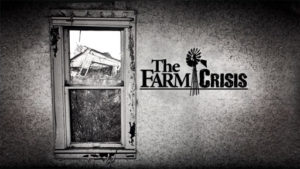 As the Farm Crisis deepened by the mid-1980s, however, one of the biggest frustrations was the seeming indifference from officials in Washington, D.C. “President Reagan was very supportive and sympathetic,” Branstad recalled in an Iowa Public Television documentary about the Farm Crisis. “Unfortunately, David Stockman, who worked for him and who was the director of the Office of Management and Budget, was pretty cavalier in his attitude. Considering all the stress and challenges we were going through in Iowa, we didn’t just take no for an answer.”
As the Farm Crisis deepened by the mid-1980s, however, one of the biggest frustrations was the seeming indifference from officials in Washington, D.C. “President Reagan was very supportive and sympathetic,” Branstad recalled in an Iowa Public Television documentary about the Farm Crisis. “Unfortunately, David Stockman, who worked for him and who was the director of the Office of Management and Budget, was pretty cavalier in his attitude. Considering all the stress and challenges we were going through in Iowa, we didn’t just take no for an answer.”
Hollywood goes to Congress, Branstad creates a new environment for business
Even Hollywood took note. Two popular films, Country and The River, drew the eyes of America to the plight of the nation’s farm families. Soon, Hollywood stars like Jessica Lange were testifying before Congress about the Farm Crisis.
Far from Congress and Hollywood, however, Branstad relied on his small-town and farm background to lead Iowa through the Farm Crisis.
“The state needed men and women with vision and ambition to pull the economy out of the doldrums,” Grassley noted. “It needed people who could see the potential for farmers to add value to their operations and for Iowa to diversify its economy. Terry Branstad was one of those people.”
Branstad was at the forefront of creating a new environment to do business. He welcomed and actively encouraged innovation that would capitalize on Iowa’s bedrock work ethic and strong schools. As a result, agriculture continues to be a mainstay of the Iowa economy while providing the economic engine that benefits many other employment sectors, including renewable energy, manufacturing, crop research and much more.
Ironically, some of Branstad’s actions in the Farm Crisis didn’t seem that significant at the time but would benefit agriculture decades in the future. In 1985, while still in his first term as governor, Branstad welcomed Xi Jinping, who was then a Communist party official and feed cooperative director from Hebei Province. Xi Jinping, who is now the president of China, spent several days in Muscatine in 1985 leading a delegation of Chinese government officials who saw Iowa agriculture first-hand and became acquainted with Iowa farm families.
That visit 32 years ago forged an unlikely bond between China and rural Iowa that endures today. I believe this bodes well for rural Iowa and our role in the global economy as Branstad serves as America’s ambassador to China.
It’s also a large feather in the cap of an Iowa farm kid from Leland, population 284, whose legacy as Iowa’s governor and ambassador to China can’t be told accurately without looking back to those painful, pivotal days of the 1980s Farm Crisis.
Want more?
Thanks for stopping by. I invite you to read more of my blog posts if you want more more intriguing Iowa stories and history, along with Iowa food, recipes and tips to make you a better communicator. If you like what you see and want to be notified when I post new stories, be sure to click on the “subscribe to blog updates/newsletter” button at the top of this page. Feel free to share this information with friends and colleagues who might be interested, too.
Let’s stay in touch. I’m at darcy@darcymaulsby.com.
P.S. Thanks for joining me. I’m glad you’re here.
@Copyright 2017 Darcy Maulsby & Co.
About me:
Some people know me as Darcy Dougherty Maulsby, while others call me Yettergirl. I grew up on a Century Farm between Lake City and Yetter and am proud to call Calhoun County, Iowa, home. I’m an author, writer, marketer, business owner and entrepreneur who specializes in agriculture. Learn more at www.darcymaulsby.com.
This column first appeared in Farm News in June 2017.


